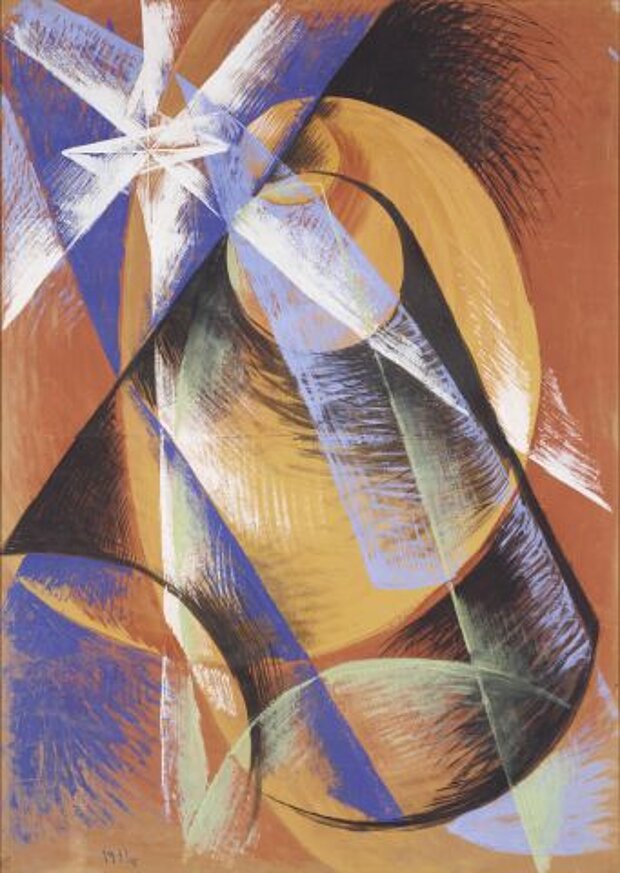
Balla, Giacomo
Mercurio passa davanti al sole
Mercury Transits the Sun
1914

© mumok
Giacomo Balla is widely regarded as one of the central figures of Italian futurism, an avant-garde movement whose birth can be exactly dated to February 20th, 1909, the day, that is, on which the poet Filippo Tommaso Marinetti published the first futuristic manifesto on the front page of the French newspaper Le Figaro. In this first manifesto, which was to be followed by many others, the necessity of an anti-classicist, future-oriented art is proclaimed, whose forms of expression were to reflect the dynamic spirit of modern technology and urban mass society. Inspired by a transit of Mercury he observed through a telescope in 1914, Giacomo Balla embarked on a series of studies revolving around the representation of movement and visual effects. The present picture depicts the various phases of the planet Mercury’s trajectory across the solar disc by translating temporal linearity into spatial simultaneity. In order to represent the simultaneity of the various abstract phases running smoothly into one another, the futurists borrow from the methods of formal analysis developed by the cubists. The planet Mercury's movement across the sun is symbolized by two intersecting circular shapes. These circles in turn are inscribed into a spiral movement that, subtly evoking the shape of the black telescope, dominates the whole picture. All this is overlaid with transparent triangles and white flashes of light with which Balla tries to capture the optical effect of refraction.
© mumok – museum moderner kunst stiftung ludwig wien